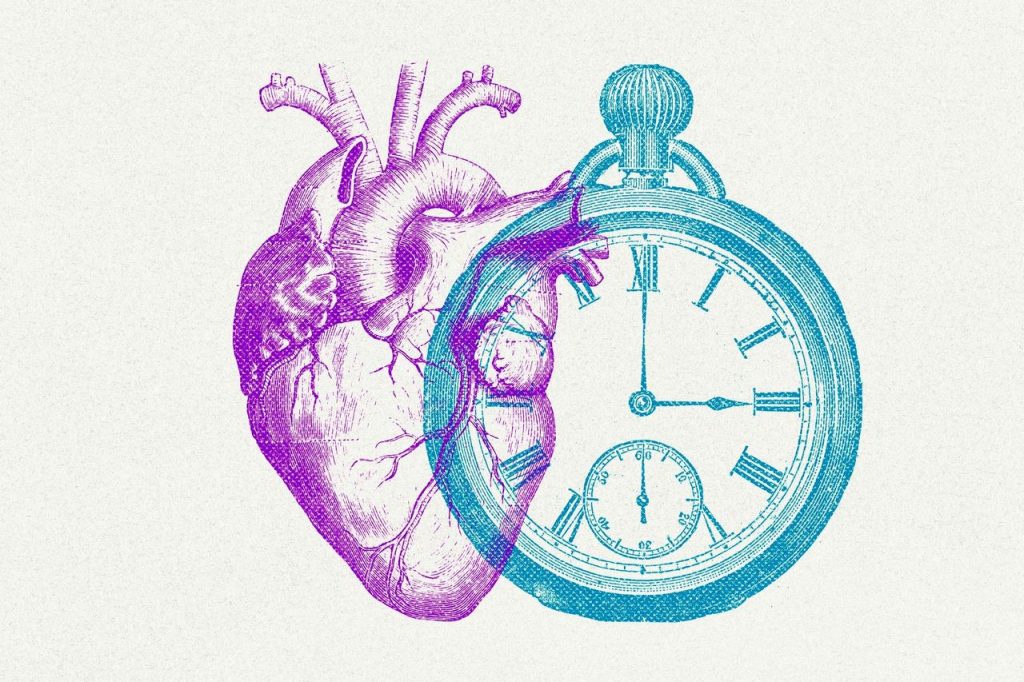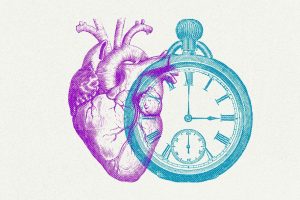The oldest millennials have entered their 40s and are noticing the effects of aging. It might not be in their heads.
A growing body of research says the aging process might resemble rolling hills more than a slow and steady climb. Age-related changes— slowing metabolism , wrinkling skin—pile up over time but may crescendo at specific points in your life.
In a study published in the journal Nature Aging in August, a team of Stanford scientists described “waves” of aging , where major biomolecular shifts happen in the body around ages 44 and 60.
The researchers found people in their mid-40s, for example, had meaningful changes in biological markers and pathways related to their abilities to metabolize alcohol and fats. These types of changes can lead to gradual weight gain or greater sensitivity to that nightly glass of wine.
“People assume everybody’s kind of aging gradually,” says Michael Snyder, a professor of genetics at Stanford University and senior author of the study. “It turns out that most changes are not linear.”
It is possible that paying special attention to healthy exercise and eating habits ahead of these waves could help lessen their blows, researchers say. In addition, people age differently, so no one number will be representative of how old or young everyone feels.
The Stanford team analyzed data from repeated collections of blood and stool samples and oral, skin and nasal swabs from 108 healthy people between the ages of 25 and 75. They tracked changes in more than 100,000 molecules and microbes, from proteins and RNA to standard lipid measures such as LDL and HDL over roughly two years and compared results between older and younger people.
Increases or decreases in these markers, some of which were linked to age-related diseases and body changes, created the waves: 81% of the observed molecules changed in at least one wave. It is unclear what exactly is causing these biomolecular shifts, Snyder says, and it is possible that people’s behavior and other variables could have affected the results.
Earlier work
A separate group of Stanford researchers similarly identified nonlinear patterns of aging in a study published in 2019 . Their study included samples from more than 4,000 people and saw big changes in levels of proteins in the blood at ages 34, 60 and 78.
“We age much earlier than we thought,” says Tony Wyss-Coray , a neuroscientist at Stanford and senior author of the 2019 study. He says the age differences between his research and the newer report—34 vs. 44—might reflect the different populations of people they sampled. (His research also included people as old as 95.)
The researchers in the most recent study had at first assumed the wave in the 40s could be a result of perimenopause or menopause in women, but found the same changes happening for men.
As for those hitting their 60s, the group had significant shifts in molecules linked to carbohydrate metabolism, kidney function and immune regulation. This could offer clues as to why people become increasingly susceptible to illness such as influenza and Covid-19 as they age, says Snyder.
The risk of developing chronic conditions such as cancer and heart disease increases with age. Among Americans 65 and older, nearly 88% have at least one chronic condition and about 64% have at least two chronic conditions, according to the Centers for Disease Control and Prevention .
Both age groups, in their 40s and 60s, had fluctuations in markers related to skin and muscle aging—highlighting the importance of keeping up strength training with age—as well as markers related to heart disease, skin and muscle and caffeine metabolism, says Snyder. People often become more sensitive to caffeine as they get older.
Snyder, who says his lab now has 14 years worth of samples, plans to follow up on the research.
Looking forward
Kamran Khan, a social-science researcher at a university in Birmingham, U.K., celebrated his 44th birthday in late August. When he read about the recent Stanford study, he says, the findings didn’t surprise him, but the timing was unfortunate.
“I thought, bloody hell, I’m turning 44 in a few days, it’s like the worst time I could read this,” says Khan. “I really just have to focus on the things that I’m trying to do well.”
Toward the tail-end of his 30s and early 40s, he noticed he was waking up more in the night. Khan also recalls a trip to a Japanese restaurant that required him to sit on the floor. His hips ached and he had to change positions every few minutes.
Researchers suggest that certain lifestyle changes or medications might influence the levels of these age-related markers. Khan has now doubled down on sleep and exercise habits, including focusing on mobility training and buying a wearable sleep tracker.
The limitations of Snyder’s study, including a small sample size and lack of geographic diversity in participants, make it difficult to generalize for the broader human population, according to some scientists who weren’t involved with the research.
“It’s just a snapshot,” says Steven Salzberg, a computational biologist at Johns Hopkins University, who says he is skeptical of the study’s conclusions. “To look at aging, you have to look at people for 10, 20, 30 years or more.”
Dr. Steve Hoffmann, a computational biologist at Leibniz Institute on Aging in Germany, studied gene regulation and expression in the colons of mice . His team similarly found two distinct periods when rapid changes occurred: in early-to-midlife and mid-to-late-life.
“These studies probably align very well with the experiences we have ourselves, or heard from others who perceive a sudden decline in physiological fitness,” he says. “This work has just begun.”
Write to Alex Janin at alex.janin@wsj.com








